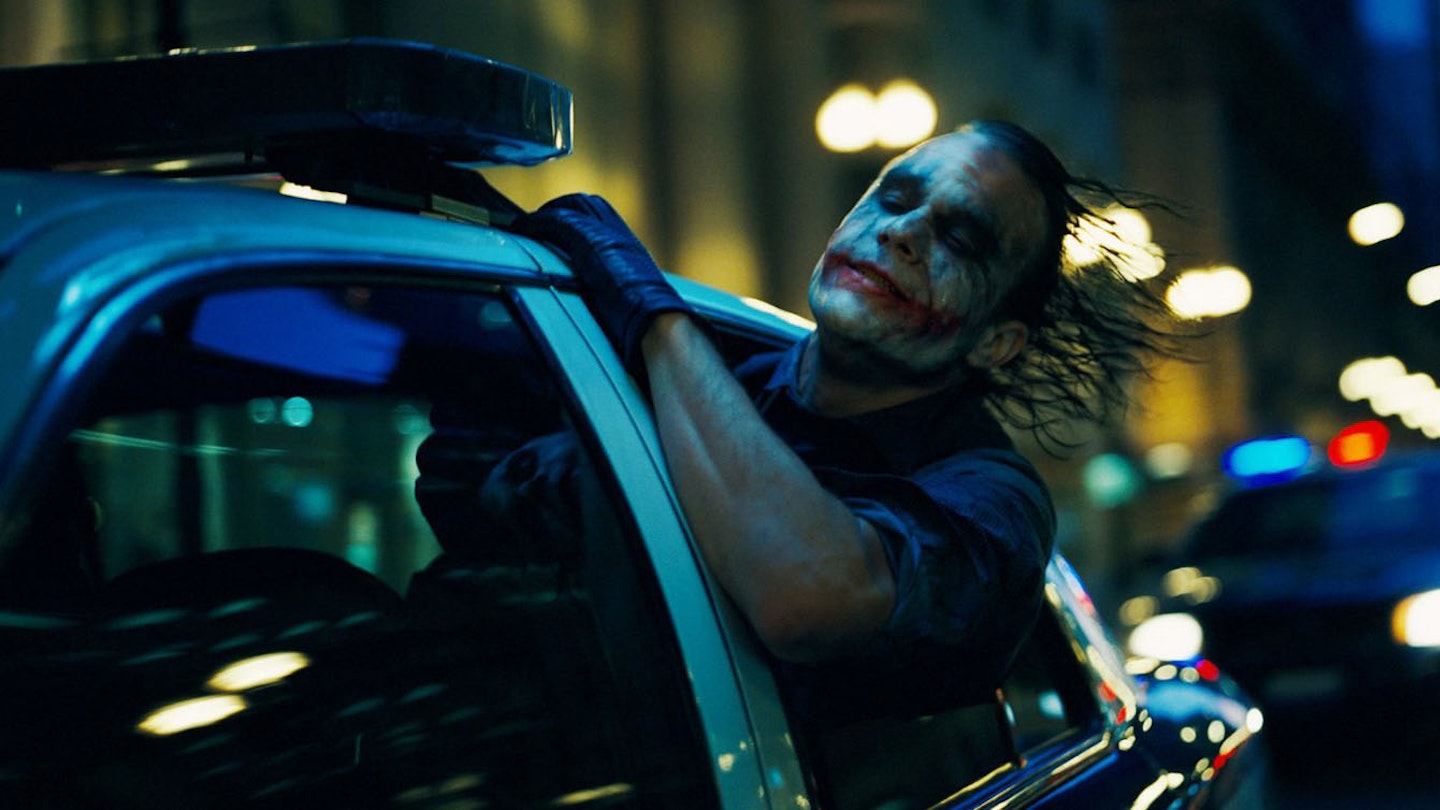Before The Dark Knight's release, you might not have fancied Heath Ledger's chances. The last person to play the Joker was the legendary Jack Nicholson in Tim Burton's first Bat-film in 1989 - and here was that guy from 10 Things I Hate About You stepping into his clown-shoes. And yet Ledger convinced from the first glimpses, and blew us away in his first moments onscreen (in William Fichtner's case, literally). Here, the filmmakers talk through the evolution of the greatest movie villain of the last decade...
A version of this article was first published in the December 2009 issue of Empire magazine. Subscribe to Empire here{
“And...here...we...go!”
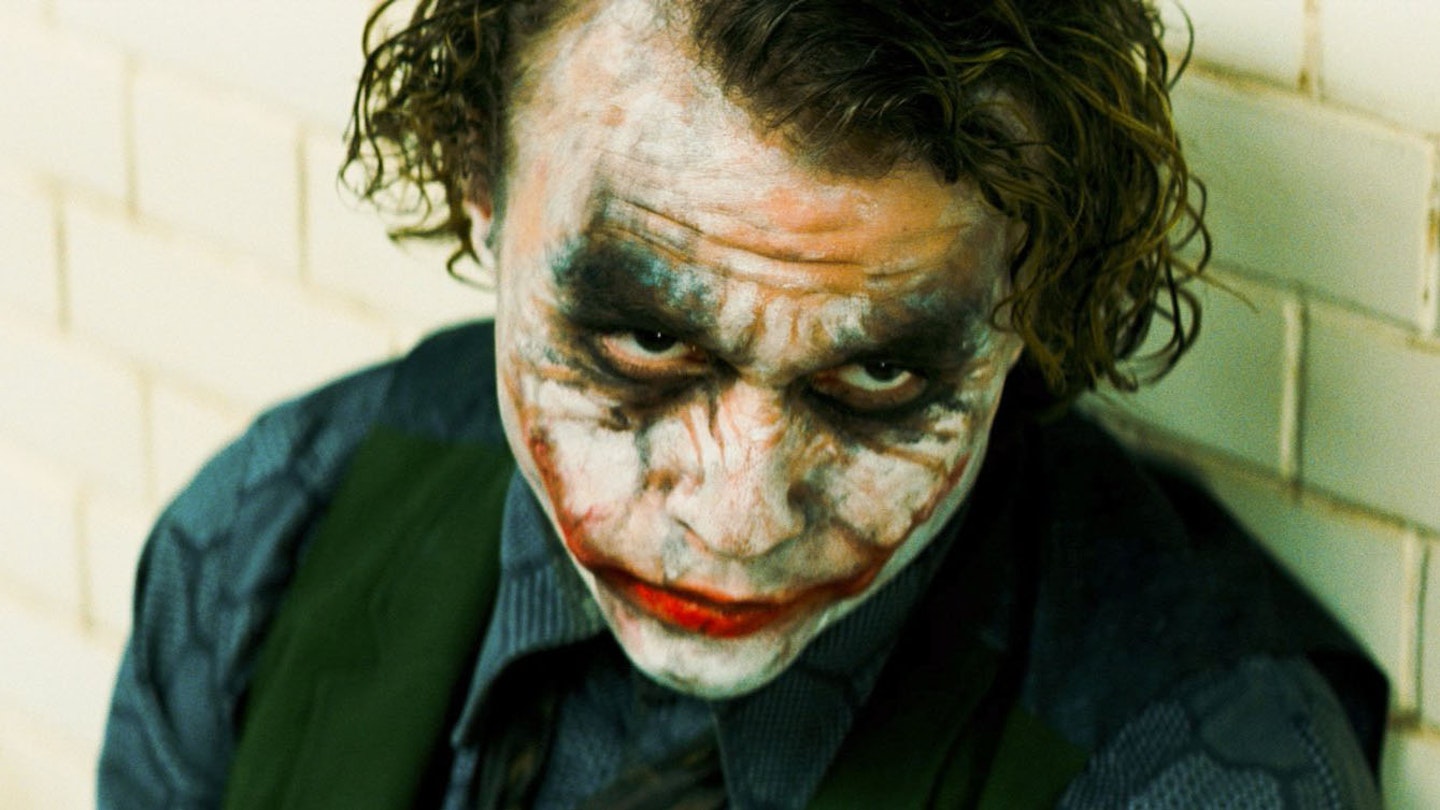
Charles Roven (producer): When Chris Nolan brought his vision to Batman he went back to the core of the character from the Detective Comics, when the series first started. Batman Begins was, for all of us — led by him — a reinvention of that iconic franchise. So there was no reason not to treat Batman Begins as the first Batman, and the story continues on. In our history, once Batman began and started to clean the streets of Gotham City, the good news was he was taking on organised crime. But the bad news is that the guy who does it by running round in a bat suit and a cape will attract some pretty fringe people. And the most fringe and most dangerous — but yet the most entertaining — is The Joker. That’s why The Joker had to be in The Dark Knight.
David S. Goyer (co-writer): Even though Batman Begins ended with that tantalising thing with the Joker card, which is something that I had suggested fairly early on and that we thought would be really fun, it wasn’t like, “Oh OK, so here’s what the sequel’s gonna be.” It wasn’t really until maybe three months after Batman Begins came out that Chris sat down with me for lunch and said, “OK, let’s talk about a sequel”.
Christopher Nolan (director/producer/co-writer): I didn’t have any intention of making a sequel to Batman Begins and I was quite surprised to find myself wanting to do it. I just got caught up in the process of imagining how you would see a character like The Joker through the prism of what we did in the first film.
Emma Thomas (producer): From the very beginning of [The Dark Knight], as soon as Chris and (co-writer) David Goyer decided we were going to follow the lead set at the end of the first film and really deal with the character of the Joker, we knew what was going to be the big challenge: coming up against the iconography.
I thought for a moment, 'We’re in trouble here. You don’t try and top Jack'.
Jonathan Nolan (co-writer): What’s so great about these characters is they’ve been around so long and they’ve been through so many iterations that it’s a little like Shakespeare: it’s people coming in and having their own take on a familiar character and viewing it through a different lens. I think the Joker particularly was a lesson for me because that character can connect to the peyote stories of Native American mythology, and Loki in Norse mythology, and there are so many examples of a Joker-like figure that you can endlessly reinvent that character.
Goyer: I like the Burton films a lot, but the one bone to pick with film, television, anything: I just never felt that the Joker was scary. Chris and I wanted the Joker to be scary. Which is what led to The Dark Knight.
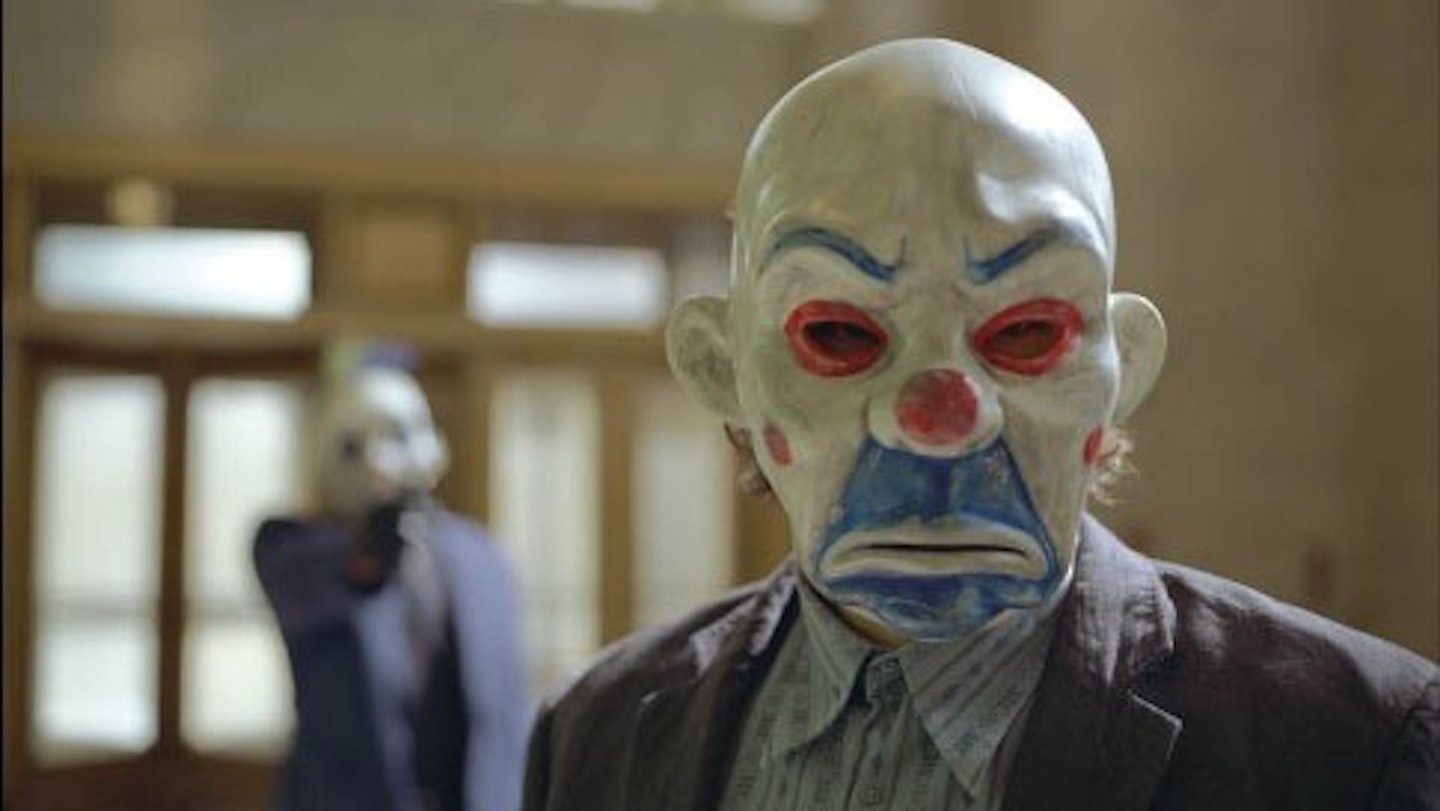
Roven: We were very fortunate that a lot of people really enjoyed Batman Begins, not just as a Batman film, but as a really good film. So we hoped that we would have a lot of goodwill with where we were going.
Sir Michael Caine (Alfred): When Chris called me [about The Dark Knight] I asked, “Who’s the villain?” He said, “The Joker.” I thought, “Oh, Jack Nicholson, who’s going to top that?” I thought for a moment “We’re in trouble here, that’s not a great decision. You don’t try and top Jack”.
Nolan: I had no reservations about following Jack Nicholson’s Joker. And that was very important to us deciding to do it. I certainly knew that, story-wise, who the character was going to be very different. Our version of The Joker was drawn very much from the earliest of the comics, really the first couple of stories where The Joker appeared. I think I made Jonah watch Fritz Lang’s Dr Mabuse prior to writing the Joker…
Heath Ledger (The Joker), speaking in August 2007: I was a huge fan of Jack Nicholson’s Joker, but, you know, having seen Chris’ first [Batman] film, I knew there was a big difference between a Chris Nolan film and a Tim Burton film. And so therefore there was enough room for a fresh portrayal.
"How about a magic trick?"
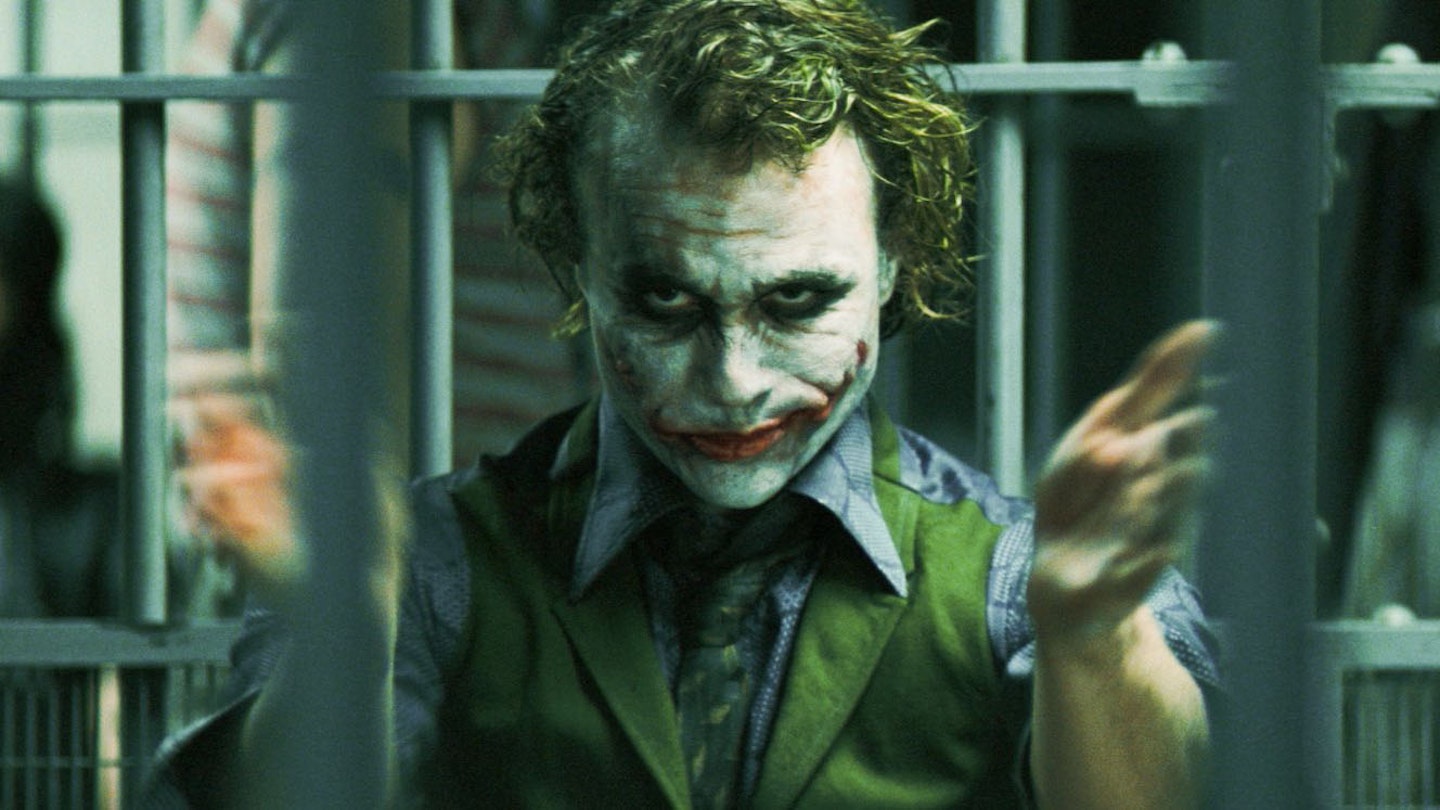
Nolan: Obviously, I wanted someone with great talent for the part, but when I met with Heath and talked with him about the way I was looking at the character, it became very clear that he wasn’t afraid to take on such an iconic character, which is a tall order! When I first met with him on the project — he came on board very early — I talked with him about the anarchic elements that I saw as being the more realistic Joker, the guy who would actually frighten an audience, and he'd already come up with a lot of that on his own.
Ledger: Chris and I very much saw eye-to-eye on how the character should be played, and it was evident from the meeting that we had a project. We had identical images within our minds.
Nolan: We talked a lot about Alex in A Clockwork Orange, people like that. He'd come up with the same things independently. I looked into his eyes and I just saw... This guy knows he can do something here, he wants to get in and do this thing. And that was without even a script! I always felt — because people were uncertain about the casting; other people were a little surprised by it, I think — but I always felt very strongly that he was going to really put everything into his performance and really do something extraordinary.
Heath generated an energy and excitement on set that's rare among actors.
Roven: We did consider other actors for the role, but I won’t tell you who. You can imagine that when you’re sitting around talking about who might be interested in playing the role, your mind runs to a lot of names. I’m not going to say that some other names weren’t discussed, but there was only one person that there was ever any serious exchange with.
Ledger: I sat around in a hotel room in London for about a month and I just locked myself away and formed a little diary and experimented with voices. I ended up landing more with in the realm of like a psychopath, someone with no empathy. Very little to no conscience towards his acts. Which is fun, because there is no real limit on the boundaries to what he'd say or how you would say something or what he would do. And I don't know; it's always a very personal process in terms of how you land in the character's shoes, so to speak. It's a combination of reading all the comic books I could and the script and then just really closing my eyes and meditating on it. Also, there is something about the metaphor of working behind the mask, and from within a mask. It always gives you the license to do whatever you want.
"Let's put a smile on that face!"
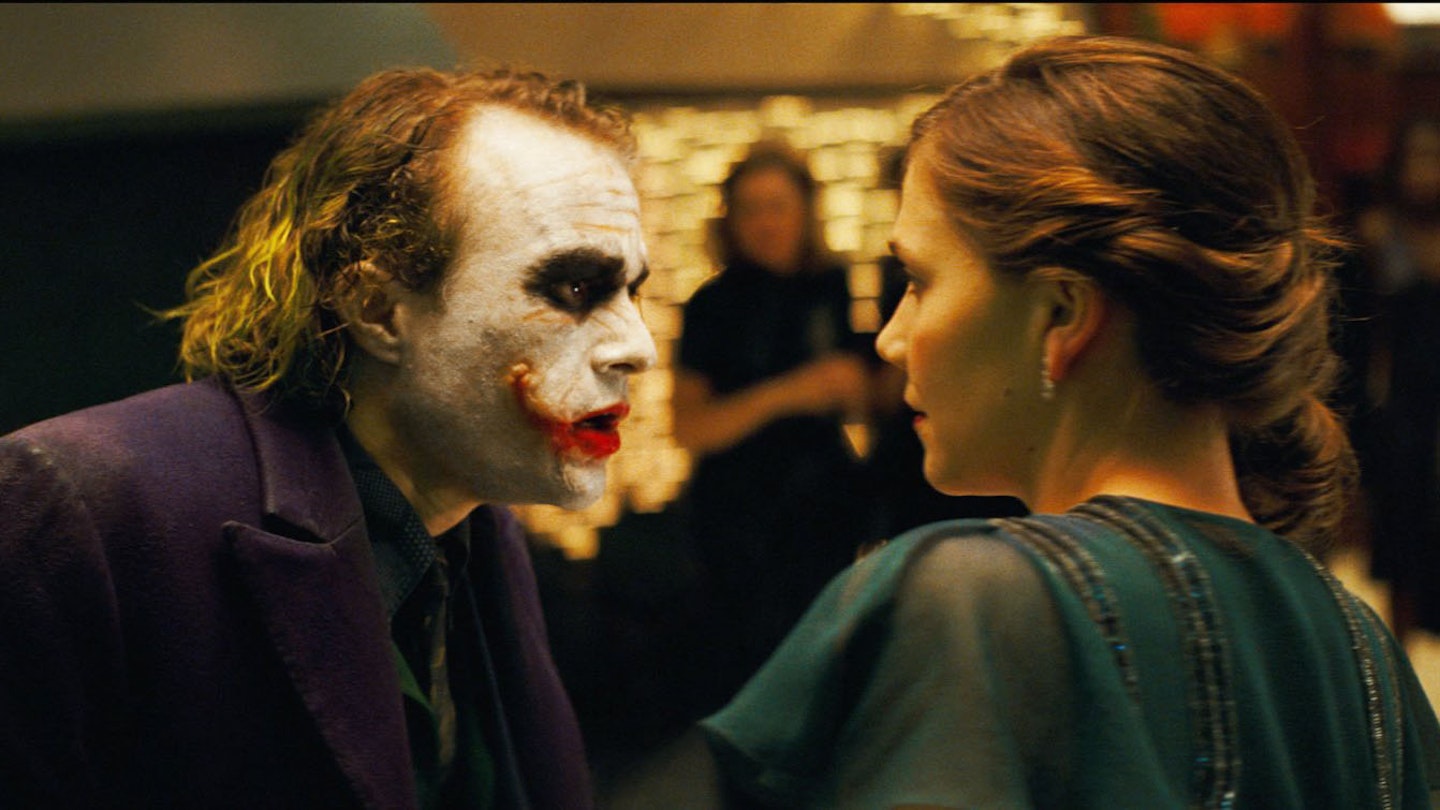
Lindy Hemming (costume designer): What we were searching for at the very beginning of how to do this Joker, were images. I was looking through images of people who might have dressed like that in the pop world and the fashion world. You can imagine Vivienne Westwood meets Johnny Rotten, Sid Vicious, Pete Doherty. You think of all those people who dress themselves up and are very interested in their appearance — and then we added into it the life of him. So whatever it is that's wrong with him — made him be like this — means he doesn't care about himself at all, really. He's very sweaty and he probably doesn't have a proper home. We were trying to make him sort of a... I don't want to say vagrant... But a back-story for him that he really doesn't look after himself.
Conor O’Sullivan (prosthetics supervisor): I was never given a concept or reason for the scarring before I started on the design of the Joker’s scars. Once I had it in my mind that it was going to be scars, rather than a fixed smile, I immediately thought of the punk and skinhead era and some unsavoury characters I had come across during this time. The terminology for this type of wound is a ‘Glasgow’ or ‘Chelsea smile’. My references had to be real. A delivery of fruit machines was made to the estate near my workshop and the man delivering them had a ‘Chelsea smile'. I plucked up the courage to ask him for a photo and he told me the story of how he had got his scars while being involved with “a dog fight”; needless to say I didn't pursue the matter, but the photos proved to be very useful reference.
Ledger: It takes about an hour to an hour-and-a-half to get the makeup on. It's pretty quick. They've come up with a new technology for the mouthpiece, as the scars are made out of silicone not prosthetic. My whole bottom lip is fake.
O’Sullivan: After a discovery on the film The Last Samurai, I realised that the best way to apply prosthetics was with a 'carrier' rather than just fitting them by hand after you've taken them out of the mould. This preserved the delicate blending edges as well as the integrity of the sculpture, whilst allowing you to make extremely soft pieces. It took myself and Rob Trenton three years and about £25,000 to work out the method. Once we had perfected the system we discovered that not only were you able to produce perfect, high-definition quality prosthetics on anyone, but it also took you less than half the time to apply — a real selling point when it came to dealing with expensive and tired actors!
Ledger: Then it takes 20 minutes to half-an-hour to paint the face…
O’Sullivan: On the test day Heath was very involved with the painting, and between him, John [Caglione, Jr, makeup artist] and Chris they gravitated towards a Francis Bacon painting that Chris kept referring to. The scarring set the position of the red 'smile' and gave a physical deformity to the whole thing, while the black-and-white makeup gave the ragged clown look.
"I'm just ahead of the curve..."

Nolan: Our Joker — Heath's interpretation of The Joker — has always been the absolute extreme of anarchy and chaos, effectively. He's pure evil through pure anarchy. And what makes him terrifying is to not humanise him in narrative terms. Heath found all kinds of fantastic ways to humanise him in terms of simply being real and being a real person, but in narrative terms we didn't want to humanise him, we didn't want to show his origins, show what made him do the things he's doing because then he becomes less threatening.
Christian Bale (Bruce Wayne/Batman): Heath was totally pushing it with The Joker. He was loving doing that. It was like seeing another actor, you know, going crazy with their role in the kind of immersion of it. And he was just… he *was *this sort of… punk, you know? An anarchistic, sort of crazy, uh… *thing *that was kind of crawling at you. He did a fantastic job.
The Joker is very much an absolute, and Heath played it that way.
Sir Michael Caine (Alfred): Heath’s Joker is incredible. He is very, very scary. I turned up every month or so to do my bit, then go back to London. I turned up and had to do a bit where Batman and I watch a video done by the Joker to threaten us. I had never seen him and he came on the television and I completely forgot my lines. I quit. Because it was so stunning. It was quite amazing.
Nolan: The Joker is very much an absolute, and Heath played it that way. What was incredible about the way he played it is it's funny; he's created an iconic performance, but there's a vulnerability, there's something... there's depth to it, that's just there simply in the way he plays it, but not in the narrative per se. Simply in the way he plays it, he just manages to make this guy real, and therefore, much more frightening, I think, because you can kind of believe in him, you can believe he could walk in the room and just start being particularly unpleasant, the way he sometimes does.
Bale: I really enjoy when somebody is pushing the work as much as he did. You can see how much he loved it. And I’m like that myself, so you can enjoy it that much more when you get a like-minded spirit. We were very good together.
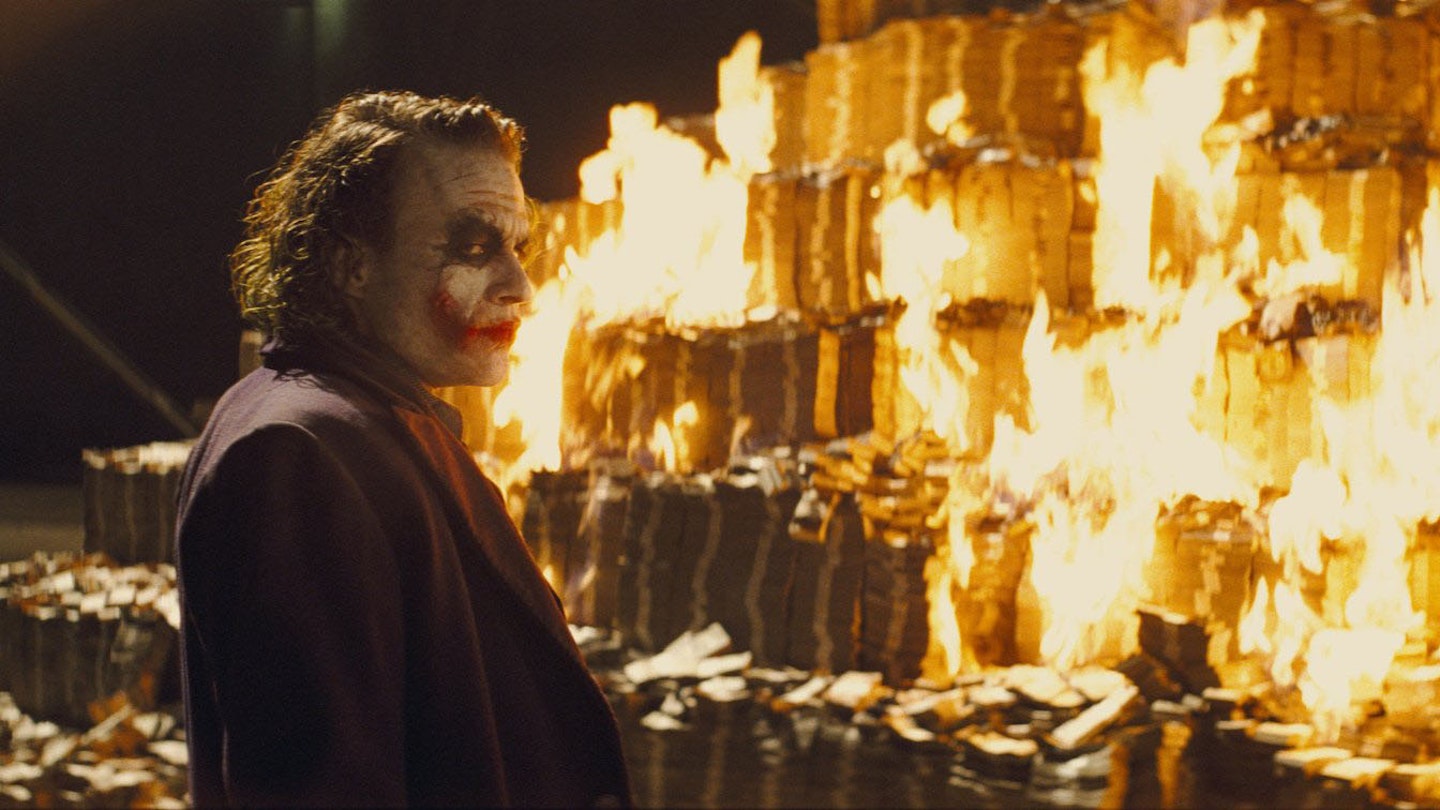
Jonathan Nolan: Heath’s take on the character will probably be one of the absolute highlights of my career in terms of a great character, a great actor — that was an amazing thing to work on and to experience.
Aaron Eckhart (Harvey Dent): Heath was deeply loved on this movie. It’s very rare that when an actor comes on set every single day that the crew is excited. He generated an energy and excitement that is rare among actors. Chris's eyes would sparkle whenever he talked about Heath. I had the experience of acting with him. Just as an actor, to watch somebody else who makes such bold choices and knows the material so well and is so committed to his character, it's exciting for me as an actor because you're really able to take your character to another level. Heath certainly did that. The movie obviously, in my opinion, in my heart is dedicated to Heath 100 percent. That’s really all I can say. The movie is his.
Ledger: It's the most fun I've had playing a role. I'm really surprised Chris knew that I could do it. And I don't know how he came to cast me. But yeah, it is the bomb. It's definitely the most fun I've had, and the most freedom I had.
A version of this article was first published in the December 2009 issue of Empire magazine. Subscribe to Empire here{
